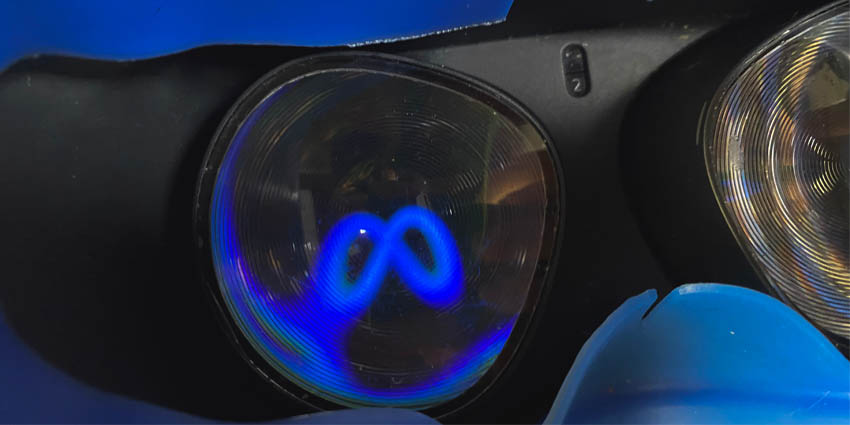At its annual Connect online showcase earlier this month, Meta officially announced the long-awaited Meta Quest Pro mixed reality (MR) headset.
Following numerous leaks and teasers, the CEO and Founder of Meta, Mark Zuckerberg, said that his firm would ship the device on October 25 for $1,499 after a short pre-order window.
The device marks the first Meta product that uses the Snapdragon XR2 chipset from Qualcomm, enabling the Quest Pro to run with 50 percent more processing power than previous models.
Additionally, the device contains redesigned controllers, lenses, and ergonomics, although reports claim the Quest Pro only has one to two hours of battery life.
Experience next level VR with Meta Quest Pro. Our highest Performance Hardware with 256 GB, 12 GB RAM, 10 advanced VR/MR sensors, spatial audio and more. Age 13+. #MetaQuestPro https://t.co/VGpF664G7g pic.twitter.com/7eBAuMGpqE
— Meta Quest (@MetaQuestVR) October 12, 2022
Interoperable Experiences
Meta is optimising and integrating its portfolio of immersive applications to correspond with its latest technology advancements made by the Quest Pro’s development.
The Menlo Park-based firm is designing immersive navigation options that enable Meta Quest Pro operators to virtually move between immersive applications instantly.
Called App to App Travel API, Meta plans to distribute the update in late 2022, and it enables developers to design interoperable applications where users can quickly jump between immersive services.
Meta employs a similar solution on its Horizon Metaverse application. The firm lets users walk through digital Metaverse portals, providing immediate access to Horizons Worlds, Workplace, and Venue; three services Meta unified in July.
Additionally, the firm is introducing Meta Quest Browser and Progressive Web Apps (PWAs) that enable headset owners to use an overlay for 2D applications without leaving an immersive experience.
Major technology firm Microsoft is also teaming up with Meta to work on PWAs, integrating its PWABuilder developer tool as an easy way to start developing integrated 2D applications on the Meta Quest Pro. Currently, Meta is announcing a range of PWAs, including Dropbox, Adobe Acrobat Pro, Coursera, LastPass, and Peacock.
During Meta Connect 2022, Zuckerberg also announced Zoom integration and a deep partnership with Microsoft to translate the Windows 365 ecosystem into an immersive workplace service.
Meta is also developing its Fitness API Beta for Fall 2022. The feature enables users to track real-time and historical fitness data, which developers can integrate into an immersive application to power leaderboards and progression-based gameplay.
Creating Natural, Immersive Interactions
Meta cannot develop its rich interoperable MR services without a visual upgrade to add flair and immersion to its powerful APIs.
The Meta Quest Pro is introducing a full-colour passthrough for its MR experiences. Previously, the Quest 2 only featured black-and-white passthrough for experimental and accessibility features.
The device also contains a spatial audio system that enhances realism by simulating how sound waves echo and reflect in a real-world location.
Meta is vastly improving its avatars; following a successful launch during Connect 2022, the firm is introducing Movement SDK that utilises the Quest Pro’s eye, face, and body tracking hardware to create full-body avatars.
Movement SDK improves immersive communications by giving Quest Pro users an intuitive way of expressing themselves via tracking and gesture-based feedback systems – significantly boosting the platform’s collaborative workplace goals.
Meta Quest Developer Hub
The firm is updating its Oculus Developer Hub 3.0 to Meta Quest Developer Hub (MQDH) – reflecting the company’s rebranding and focus towards developing MR experiences.
MQDH provides developers with the tools required to create Meta Quest Pro immersive experiences, leveraging platform features like full-colour passthrough and the firm’s presence platform, which supports real-time 3D (RT3D) colour passthrough graphics.
MQDH enables developers to manage device settings and file management. The service also features a low-barrier drag-and-drop production pipeline for easy application testing and publishing.
Additionally, the suite provides building blocks such as pre-made code to enable beginners to start creating new multiplayer immersive applications. Furthermore, Meta’s hub contains spatial anchor tools that allow people to interact with shared virtual assets in the same physical location.
The new developer hub lands just as Meta, and other Metaverse firms, are pushing a digital economy based on user-created content.







